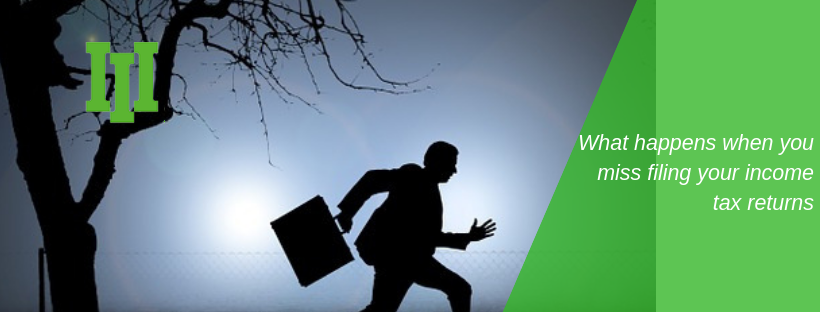SHARE
Fixed Deposits (FDs) have been the conventional method of investments for Indians, it has been our parents and grandparents trusted investment partner for a very long time due to its fixed return and assurance of the capital. But due to the continuously declining trend of interest rates on FDs, there is a shift in the investors’ preference towards Debt Mutual Funds. Some do believe that FDs and Debt Funds are at par, but they do differ in terms of liquidity, risk, rate of return, taxation and investment types.
What are FDs and Debt Funds?
| FIXED DEPOSITS | DEBT MUTUAL FUNDS |
| They are an investment option offered by the bank and corporates for a fixed tenure and fixed interest rate. | They are an investment option where the investor funds are pooled together and invested in fixed income securities like corporate bonds, government securities, treasury bills and money market securities. |
Types of Funds to invest?
FDs – There are two types of FDs –
- Cumulative FDs – The interest is compounded over the term of the deposit and paid at the time of maturity. This leads to a higher interest earning due to compounding effect over time.
- Non Cumulative FDs – The interest is paid periodically either monthly or quarterly. Thus the interest amount received remains the same at the rate at which you initially invested.
Debt Mutual Funds – They are open-ended and categorized based on the risk involved as well as investment period.
| Categories | Characteristic |
| Liquid Fund | Invest in securities with a maturity of 91 days |
| Ultra-Short Duration | Invest in securities with a maturity of 3 to 6 months |
| Low Duration | Invest in securities with a maturity of 6 to 12 months |
| Short Duration | Invest in securities with a maturity of 1 to 3 years |
| Medium Duration | Invest in securities with a maturity of 3 to 4 years |
| Medium to Long Duration | Invest in securities with a maturity of 4 to 7 years |
| Long Short Duration | Invest in securities with a maturity greater than 7 years |
| Dynamic Bond | Invest in securities across different durations |
| Corporate Bond | Minimum 80% investment in highest rated corporate bonds which can be across durations |
| Credit Risk | Minimum 65% investment in below highest rated corporate bonds which can be across durations |
| Banking & PSU Debt | Minimum 80% investment in banks and PSUs |
| Floater | Minimum 65% investment in floating rate instruments |
| Gilt | Minimum 80% investment in G-secs |
| Gilt with 10-year constant maturity | Minimum 80% investment in G-secs having an average maturity of 10 years |
Risk Involved –
| FDs | Debt Mutual Funds |
| The banks provide assurance that the principal will be returned along with the interest that was agreed while depositing the money. Hence the risk is negligible. | Mutual Funds are subject to market risks and there is no assurance of the principal and the returns. Depending upon the time horizon and credibility of the securities, the risk can vary from very low to high.
|
Liquidity –
The liquidity for FDs and Debt Mutual Funds is easy. FDs can be withdrawn before the maturity period; some banks charge a small penalty for doing so. Debt Mutual Funds can be redeemed anytime (except Fixed Maturity Plan (FMP) which have lock-in). However, keep in mind that some funds may have an exit load, which is a charge that investors have to pay when exiting a fund within a certain period of time.
Method of investment –
| FDs | Debt Mutual Funds |
| A lump sum amount has to be deposited at the fixed interest rate. | The investments can be made monthly, through SIP or lump sum. SIP reduces the risk of volatility of the market and investment can be made when there are additional funds. |
| Investments can be made at the bank or online. | Investments can be made online or offline through a financial advisor, as well as online through third party platforms or fund websites. |
Taxation –
| FDs | Debt Mutual Funds |
| As per investor’s tax slab, interest is taxed as earned. | Short term capital gains (less than 36 months) are taxed like FDs at the investor’s tax slab. |
| Long term capital gains (greater than 36 months) are taxed at 20 percent after allowing indexation benefits which reduces the tax implication. |
The long-term capital gain adds an advantage to Debt Mutual Funds against FDs.
Illustration of how debt funds fetch better post-tax yields –
| Particulars | Debt Funds | Fixed Deposits |
| Invested sum (Year of purchase-2015) | Rs 2,00,000 | Rs 2,00,000 |
| Return rate | 7% | 7% |
| Holding period | 3 years | 3 years |
| Fund worth at the end of tenure | Rs 2,45,000 | Rs 2,45,000 |
| Inflation | Adjustment available | Adjustment not available |
| Indexed Cost of Acquisition (Year of sale-2019) | Rs 2,20,472 | – |
| Taxed Amount | Rs 24,528 | Rs 45,000 |
| Tax to be paid (assuming highest tax bracket of 30%) | Rs 4,906 (Tax rate applicable is 20%) | Rs 13,500 |
| Returns after tax | Rs 40,094 | Rs 31,500 |
Start your personal wealth journey with us today!

Plan to Maximize Your Retirement Years
October 4, 20180 Comments
Leave a Reply
- 2019
- 2020
- Awards
- Banking
- Budget
- Cashflow Management
- CORPORATE
- Corporate Wellness
- Couple
- Cross Border Financial Planning
- Dreams
- FAQ
- FINANCE
- Financial Goal
- Financial Planning
- FINANCIAL TRANSITIONS
- FINANCIAL WELLNESS
- Goals
- Holidaying
- Housing
- Insurance
- Investment
- Market
- Money
- Mutual Funds
- NRI
- Portfolio
- Real Estate
- Retirement
- Risk Management
- Rupee
- Succession Plan
- Tax Planning
- Tax Return
- Technology
- Wealth Management
- Women
Categories
Fixed Deposits (FDs) have been the conventional method of investments for Indians, it has been our parents and grandparents trusted investment partner for a very long time due to its fixed return and assurance of the capital. But due to the continuously declining trend of interest rates on FDs, there is a shift in the investors’ preference towards Debt Mutual Funds. Some do believe that FDs and Debt Funds are at par, but they do differ in terms of liquidity, risk, rate of return, taxation and investment types.
What are FDs and Debt Funds?
| FIXED DEPOSITS | DEBT MUTUAL FUNDS |
| They are an investment option offered by the bank and corporates for a fixed tenure and fixed interest rate. | They are an investment option where the investor funds are pooled together and invested in fixed income securities like corporate bonds, government securities, treasury bills and money market securities. |
Types of Funds to invest?
FDs – There are two types of FDs –
- Cumulative FDs – The interest is compounded over the term of the deposit and paid at the time of maturity. This leads to a higher interest earning due to compounding effect over time.
- Non Cumulative FDs – The interest is paid periodically either monthly or quarterly. Thus the interest amount received remains the same at the rate at which you initially invested.
Debt Mutual Funds – They are open-ended and categorized based on the risk involved as well as investment period.
| Categories | Characteristic |
| Liquid Fund | Invest in securities with a maturity of 91 days |
| Ultra-Short Duration | Invest in securities with a maturity of 3 to 6 months |
| Low Duration | Invest in securities with a maturity of 6 to 12 months |
| Short Duration | Invest in securities with a maturity of 1 to 3 years |
| Medium Duration | Invest in securities with a maturity of 3 to 4 years |
| Medium to Long Duration | Invest in securities with a maturity of 4 to 7 years |
| Long Short Duration | Invest in securities with a maturity greater than 7 years |
| Dynamic Bond | Invest in securities across different durations |
| Corporate Bond | Minimum 80% investment in highest rated corporate bonds which can be across durations |
| Credit Risk | Minimum 65% investment in below highest rated corporate bonds which can be across durations |
| Banking & PSU Debt | Minimum 80% investment in banks and PSUs |
| Floater | Minimum 65% investment in floating rate instruments |
| Gilt | Minimum 80% investment in G-secs |
| Gilt with 10-year constant maturity | Minimum 80% investment in G-secs having an average maturity of 10 years |
Risk Involved –
| FDs | Debt Mutual Funds |
| The banks provide assurance that the principal will be returned along with the interest that was agreed while depositing the money. Hence the risk is negligible. | Mutual Funds are subject to market risks and there is no assurance of the principal and the returns. Depending upon the time horizon and credibility of the securities, the risk can vary from very low to high.
|
Liquidity –
The liquidity for FDs and Debt Mutual Funds is easy. FDs can be withdrawn before the maturity period; some banks charge a small penalty for doing so. Debt Mutual Funds can be redeemed anytime (except Fixed Maturity Plan (FMP) which have lock-in). However, keep in mind that some funds may have an exit load, which is a charge that investors have to pay when exiting a fund within a certain period of time.
Method of investment –
| FDs | Debt Mutual Funds |
| A lump sum amount has to be deposited at the fixed interest rate. | The investments can be made monthly, through SIP or lump sum. SIP reduces the risk of volatility of the market and investment can be made when there are additional funds. |
| Investments can be made at the bank or online. | Investments can be made online or offline through a financial advisor, as well as online through third party platforms or fund websites. |
Taxation –
| FDs | Debt Mutual Funds |
| As per investor’s tax slab, interest is taxed as earned. | Short term capital gains (less than 36 months) are taxed like FDs at the investor’s tax slab. |
| Long term capital gains (greater than 36 months) are taxed at 20 percent after allowing indexation benefits which reduces the tax implication. |
The long-term capital gain adds an advantage to Debt Mutual Funds against FDs.
Illustration of how debt funds fetch better post-tax yields –
| Particulars | Debt Funds | Fixed Deposits |
| Invested sum (Year of purchase-2015) | Rs 2,00,000 | Rs 2,00,000 |
| Return rate | 7% | 7% |
| Holding period | 3 years | 3 years |
| Fund worth at the end of tenure | Rs 2,45,000 | Rs 2,45,000 |
| Inflation | Adjustment available | Adjustment not available |
| Indexed Cost of Acquisition (Year of sale-2019) | Rs 2,20,472 | – |
| Taxed Amount | Rs 24,528 | Rs 45,000 |
| Tax to be paid (assuming highest tax bracket of 30%) | Rs 4,906 (Tax rate applicable is 20%) | Rs 13,500 |
| Returns after tax | Rs 40,094 | Rs 31,500 |
Start your personal wealth journey with us today!
0 Comments












0 Comments